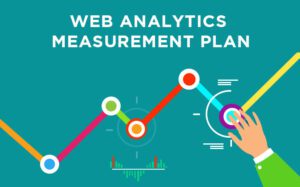
Making decisions based on data is key to success in the fast-paced world of digital marketing. You can’t just go with your gut or instincts anymore. Today, digital marketing data is the most important tool for getting accurate and relevant results in marketing.
But because there are so many routes and tactics, it’s like getting lost trying to send the right word to the right people at the right time. The story’s main character? The skill of digging into a sea of data, coming up with useful ideas, and figuring out how people behave and what trends are happening is called data-driven decision-making.
In the ever-changing digital world, this is your business talent that will help you change quickly, stay competitive, and do well. You’ve arrived in the era of effective data-driven marketing, and this is your manual for mastering it.
Key Performance Indicators (KPIs) in Digital Marketing
Key performance indicators (KPIs) are very important in digital marketing and change. They help businesses find their way in the huge ocean of data by showing them how far they’ve come, and how well their plans are working, and letting them make smart choices.
It’s important to pick the right Key Performance Indicators (KPIs) to help you find your way through the huge amount of data that comes with digital marketing. However, there is a real risk of KPI overload when there is a lot of data. So, pay attention to KPIs that are directly related to your goals and give you useful information.
Think about these important numbers:
- Conversion Rate: This number shows how well marketing is working by measuring what users do.
- Customer acquisition cost (CAC): Customer acquisition cost (CAC) is a number that shows how much it costs to get new customers.
- Click-Through Rate (CTR): how relevant an ad is and how interested the viewer is in it.
- Return on Investment (ROI): Figures out how profitable the whole effort was.
In the process of going digital, picking the right KPIs is like setting an instrument to play the right notes in your business orchestra. These KPIs should help you reach your change goals, like focusing on the customer, making operations more efficient, or coming up with new ideas.
As an example:
- Digital Adoption Rate: A measure of how well technology is being used together.
- Customer Satisfaction (CSAT) Score: To improve the online shopping experience for customers.
- Operational performance KPIs: Making business processes run more smoothly.
- Innovation Index: Keeping an eye on new digital products and how they affect the market.
Key Performance Indicators (KPIs) for Digital Marketing Channels

An extensive set of tools is needed to open up the digital world because it is a complex field with many ways to reach and interact with audiences. Each digital marketing platform is used for a different reason and needs its key performance indicators (KPIs) to show how well it’s working.
When it comes to search engine optimization (SEO), we need to look at things like term results, organic traffic, click-through rate (CTR), and bounce rate. We’re most interested in the click-through and conversion rate, quality score, and cost-per-click (CPC) for pay-per-click (PPC) ads. Engagement, following increase, conversion rates, and social share of voice (SOV) are all very important in social media marketing.
Establishing SMART targets for KPI evaluation
In the ever-changing digital marketing landscape, SMART goals guide change. It organizes goal-setting with specific, measurable, achievable, relevant, and time-bound criteria.
The “S” in SMART specifies the transformation’s goal—not just “transforming digital marketing” but “enhancing customer engagement with data-driven personalization.” Making vague improvements, like 20% longer website sessions, measurable is crucial.
This ensures goals are achievable with available resources, like marketing automation. Relevance aligns everything with broader missions, like improving the customer experience, and time-bound goals emphasize urgency and deadlines.
SMART goals simplify digital marketing transformation by providing clarity, quantifiability, and alignment, enabling data-driven decisions and marketing success.
Web Analytics and Tracking User Behavior
Digital marketing is the best way to connect businesses with customers, increase brand awareness, and boost sales. Web analytics guides these efforts. These tools reveal the complexities of website user interactions, helping businesses improve their strategies and user experience.
Web analytics are multipurpose in digital marketing. The performance scorecard measures website traffic, conversions, and click-through rates. The artist’s palette is used to segment audiences for hyper-targeted marketing. Editors identify winners and eliminate losers to improve content. The accountant calculates the ROI for each marketing dollar.
Data drives success, and web analytics tools are the watchful eyes and keen minds that reveal the path to success. They help businesses stay on track, make smart decisions, and create ROI-driven, customer-focused campaigns that engage audiences and grow.
Tracking Website Visitors and User Behavior
In order to succeed as a business, you must learn the secrets of your website visitors. Therefore, it is critical to investigate ways of monitoring and comprehending user behavior. Along the way, you’ll come across web analytics tools, heatmaps, conversion tracking, cookies, and IP tracking.
Discover more about your site’s visitors with web analytics tools. Preferences and whereabouts can be uncovered through the use of cookies and IP tracking. Conversion tracking guarantees you’re on the correct track to your goals, while heatmaps and session recordings graphically map their interactions.
If you can get a handle on these techniques, you will have a road map to digital success. Why?
By keeping tabs on site traffic and user actions, you can improve the user experience by fixing problems found by your users and creating more engaging content by learning what your audience likes. It permits personalized engagement through targeted marketing as well. In addition, it’s essential to determine the return on investment (ROI) of your digital marketing campaigns and allocate funds wisely.
Both methods use web analytics tools and cookies to gather data, and they both aim to improve website performance by learning more about website visitors and their actions. If you want a more in-depth look at user engagement, behavior tracking is the way to go, while visitor tracking focuses on basic information and demographics.

Analyzing Traffic Sources, User Demographics, and Engagement Metrics
The core of successful online business strategies is the analysis of traffic sources, user demographics, and engagement metrics. Businesses can optimize marketing, create personalized experiences, and improve the user experience by understanding website visitors’ origin, identity, and engagement.
This data-driven strategy is the key to a more effective and interesting web presence, from distributing resources efficiently to customizing content and suggestions. For this to be a success, you must:
- Use web analytics tools such as Mixpanel, Adobe Analytics, and Google Analytics, and make sure to set them up correctly to get accurate data.
- Divide your target market into subsets defined by geography, demographics, and actions. You can use it to improve your marketing and create personalized content.
- Be on the lookout for conversion paths that aren’t performing up to par, and fix those areas to increase conversion rates.
- We will go into A/B testing in more depth shortly, but it is a powerful tool for trying out various parts, content, and tactics to refine your approach for better results.
A/B Testing and Optimization Strategies
A/B testing, which is also called split testing, is a way to see which of two versions of something works better. This is usually done with a website, an email, or an ad. These two versions, which are called A and B, are slightly different. Businesses use A/B testing to find out which version works best for reaching a certain goal, like getting more people to click on a website or sign up for their email list.
Why is A/B testing important for going digital? Companies can use data to make decisions, improve user experiences, make marketing more effective, and adapt to a digital world that is always changing. A/B testing will remain an important way for businesses to stay competitive as they become more digital.
Creating and Running Effective A/B Tests
Let’s look at the details of how to plan and carry out successful A/B tests, focusing on the most important steps in the process:
- Clear Goal Setting: To start, make clear goals for allocating your digital strategy’s optimization, like increasing sales or click-through rates.
- Formulating a Hypothesis: Write down the changes you think will make your chosen metric better, such as changing the color of a button to increase conversion rates.
- Variation Design: Based on your hypotheses, make sure that the A and B variations are different from each other.
- Segmenting your audience: Divide your audience into groups that will be exposed to different variations. Make sure these groups are large enough for the results to be statistically significant.
- Random Allocation: To keep results from being biased, assign segments to variations at random.
- Collection of Data: Run the A/B test and collect data consistently and accurately.
- Statistical Analysis: Use statistical methods to look at the data and figure out which variation works best.
- Implementation of the Winning Variation: To make your digital platform work better, make the changes based on the winning variation.
- Iteration and Continuous Testing: A/B testing is a process that never ends. Keep testing and improving to keep up with changes in the market and what users want.
Use well-known A/B testing tools like Adobe Target, Google Optimize, VWO, Crazy Egg, Unbounce, Split.io, AB Tasty, Kameleoon, and Freshmarketer.
Also, don’t forget to keep an eye on new trends like smart testing with machine learning, personalization optimization for more customized experiences, and multidimensional testing for a full picture of how people behave.

Implementing Optimization Strategies Based on Test Results
When the test results are in, the next step is to use them to make data-driven decisions, improve the user experience, boost return on investment (ROI), and gain a competitive edge. How to do it:
- Find the winning variation: Find the page, email subject line, ad copy, or anything else you tested that worked better than the others.
- Write down important ideas: What made the winning version do better? It could have been the layout, the text, the call to action, or something else.
- Make an implementation plan. This could mean redesigning a website, changing the way ads work, or rearranging email templates.
- To better track the effects of each change, don’t make big changes all at once. Instead, test small changes over time.
- Regularly check and make changes. This iterative method makes sure that your digital strategies stay flexible and adaptable.
Examples of A/B tests that worked well in real life for digital marketing
Come with me as I tell you about some real-life A/B testing successes that will inspire you and show you how to do great data-driven marketing.
- A/B testing helped Airbnb’s personalized search results strategy, which led to a huge 5% rise in conversions. This shows how powerful user-tailored experiences can be.
- Dropbox made it easier for people to sign up, which led to a 10% increase in registrations. This shows that A/B testing can make it easier for people to start using a service.
- Amazon’s improved product suggestions improved the shopping experience, leading to more sales.
- Booking.com used A/B testing to use dynamic pricing, which led to higher profits and conversion rates.
- With the help of A/B testing, HubSpot’s email marketing campaigns did well, with 15% more click-throughs.
- Meanwhile, Netflix’s constant A/B testing of suggested content makes users more interested, keeps them around longer, and makes binge-watching more fun.
These real-life examples show how A/B testing can completely change digital marketing strategies, make users happier, and help businesses grow. It’s important to remember that data is the map that leads to great marketing.
Using Metrics and Optimization to Win at Marketing
“What gets measured gets improved,” as Peter Drucker wisely said. In this blog, we talked about how KPIs, web analytics, and A/B testing are very important for improving digital marketing. These tools give businesses the power to improve their strategies, get more sales, and do well in the constantly changing digital world.
People who make decisions and optimize based on data will be successful in the future. Use their power to stay flexible, up-to-date, and competitive in this age of digital transformation.
We do trust data after all, right? Making decisions based on data is becoming more and more important in the marketing field. By using metrics and optimization techniques, companies can learn a lot about how customers act, find ways to make things better, and ultimately reach their marketing goals. To stay ahead of the competition in the digital world, which is changing quickly, you need to be willing to adapt and use data-driven strategies. Let’s use the power of data to make things happen and feel confident as we move through the constantly changing world of marketing.
 Data Science in Digital Marketing Data Science in Digital Marketing: Mechanism Examples, Benefits Data Science Meets Digital Marketing Magic
Data Science in Digital Marketing Data Science in Digital Marketing: Mechanism Examples, Benefits Data Science Meets Digital Marketing Magic
